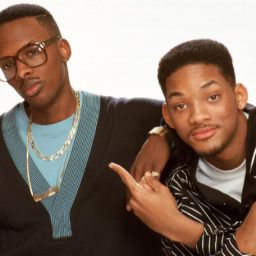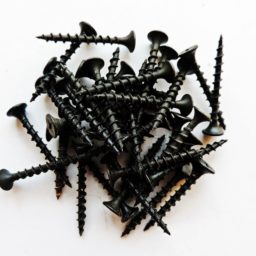With the platformization of the web, creatives are set up to compete for attention while the platforms that host their content benefit from monetization at scale. It’s an important issue, but to say creatives have been screwed over by default helps nobody, mostly because it’s incorrect.
When reading Jon Westenberg‘s recent comments about creatives’ current challenges, I found myself disagreeing with the premise and much of what stemmed from it. I feel it’s important to walk through the presented thoughts and refute them or at least provide a different perspective. I normally don’t do these types of articles, but since it’s such a widely shared piece, I feel it’s important to do this, because it’s an unconstructive mindset to adopt.
Creatives, seeing yourself as a victim doesn’t help you. It disempowers you. It gives you an off-putting aura that communicates a sense of entitlement. That’s not to say that you’re not entitled to fair pay and treatment. Just compare it to the work floor: you’re entitled to salary, but if you give off a sense of entitlement it will annoy colleagues, superiors, and clients.
Jon starts off with his own experiences as a writer and speaker, explaining how requests come in:
…until you tell them you want them to pay for your expenses or even a fee. Then they disappear pretty damn fast.
Which is your own fault for violating the golden rule — bloggers and writers must never try to get paid.
I’ve encountered this. For a long time, this used to be my personal golden rule: I was afraid that paid writing would take the fun out of it, but instead paid writing makes me a lot more comfortable with spending big chunks of time on research and narrative. Now, I’m very strategic about when I write for free and when I don’t. Some sites help me reach new audiences that wouldn’t otherwise encounter my writing. Some don’t. Some benefit from the visibility I can give them, and for some that doesn’t matter. Sometimes I’m just really busy and can’t afford to spend my time on unpaid writing.
When writing’s unpaid, I try to make sure I convert the audience to my Twitter account and newsletter. When writing’s paid, I leave the question of credits up to the client.
When I first started charging for writing, I was nervous, but now I’m comfortable with it. I get occasional requests, and some I’ll answer with a cost estimate. Some requests then disappear, indeed, but that’s fine – it’s part of my strategy, and I don’t expect people to know beforehand that I expect payment. The free writing I do fits into a wider strategy: it helps me build my network through which I acquire clients for consultancy work.
I’ve never experienced any type of animosity when charging money. It’s about managing expectations, clearly explaining yourself, and simply getting comfortable with asking for something.
It’s also becoming increasingly difficult to look at publishing online or being an artist or recording music or starting a publication as a full time career.
I think we’ve gone through the hardest phase. People are used to mobile payments and subscriptions for digital content now. Many people are familiar with crowdfunding. Publications like The Correspondent are showing that membership models with fair payment for writers are viable. Blendle shows micropayments for articles are viable when properly designed and introduced to the end user.
If you’re an independent artist or writer, you could set up a Patreon, where fans of your work pledge to make a fixed contribution for every piece you publish (this is something I’m considering for my newsletter (EDIT: done!)).
It’s getting increasingly viable to look at creativity as a full time career.
The big problem is not the money. It’s the attention you have to compete for. We’re all creators of content – so what’s the role of creatives?
If you do want to get into creative work, you’re going to have to see it as a side hustle. Not your main gig. That’s just the way it is.
This is actually good advice. Take time to build up your audience. Take time to figure out your business models. The business models of earlier days are not set in stone anymore. You need to be innovative. Don’t rely on the old. Don’t do new things in an old way. Find new ways.
We’ve made it easier than ever to make stuff, and harder than ever to make enough money to live. And every day, there’s a new “disruptive” startup that does more damage.
What they “disrupt” is creator’s profits, most of the time. That’s what music streaming did.
Woah, woah, woah. Have we forgotten about piracy? Piracy disrupted creators’ profits. In part, because certain industries thought they could hold back certain developments and buy more time. They couldn’t. Piracy soared, and then… Music streaming disrupted piracy.
People don’t want to pay for content. They want to consume it for free, or monetise it for themselves.
Sure. People don’t want to pay for chocolate. Don’t want to pay for a new smartphone. Don’t want to pay for a Toastmaster 3000 in just five easy instalments. But all those companies have figured out ways to get people to pay. The ones that didn’t are dead. There’s nothing that stops creatives from finding business models, but they need to bear in mind two important points:
- Optimize your business model so that you can compete for attention;
- Don’t look at the past for how to monetize.
For example, I usually tell musical artists to look at YouTubers instead of the recording business. YouTubers and livestreamers make great use of crowdfunding, donations, subscriptions, and sponsorships. Make that which generates attention available for free, so it travels far and wide, then monetize the scarce and exclusive. It’s the same basic principle I’ve been repeating since 2011, when I published my thesis about marketing music through non-linear communication (networks).
If you tell people you’re an artist, they’ll tell you that’s not much of a career path and you should get a real job.
Was this ever not true? Westenberg’s next point is that people building tech startups for artists are celebrated. This may be true (though he’d be surprised how many obviously dead-on-arrival startups there are). I think startups being celebrated by default mostly stems from people not understanding tech startups. As the phenomenon of tech startups matures and becomes more mainstream, it’s drawing a lot more criticism. I hear people on radio comparing startups to “getting unemployment compensation paid for by investors.”
The article’s most interesting bit looks at the amount of followers Nicki Minaj has on Instagram (77 million) and compares it to the amount of albums sold (800k). He follows it up with the following question:
If a mega star like Nicki Minaj has a conversion rate that low for actual sales, what does that mean for indie creators?
Conversion rates are likely much higher. Artists like Minaj have a lot of followers who are not fans. Or a lot of people who like the music, but are not that into it. Artists at such scale are public figures – people follow them and know about them, not just for their music, but also for their personalities and fame. Indie artists are more likely to have more engaged fans, and if they devise a smart strategy they can monetize more than just 1% of them. They don’t have to depend on the type of ‘mass’ strategies employed for acts like Minaj, which inevitably lead to low conversion rates.
We’re giving money to tech platforms to become “Unicorns” off the backs of creatives, and driving creatives out of business.
This is a legitimate issue. Personally, I’m excited by the discussions in the blockchain-scene, where people are trying to figure out how to fairly distribute the value generated by platforms’ participants. Other than that, you have to strategize: know when and how to use a platform and know when to turn your back on a platform. Make sure you’re in direct touch with your audience, so you can bring them with you when you move away from a platform.
In a reply to a commenter, Westenberg added the following:
Also — it’s an awful lot harder for a writer or an artist to get paid for playing concerts. And even if they did, they’re still not being paid for their creative work, they’re being paid for their personal appearance and that’s not the same thing.
It’s competition. People are willing to do it for free: that makes it hard to charge money for the same thing. And the latter part of his statement is true, but it’s arguably not so different from before. Did people buy plastic discs with music on them in order to pay for the creative work, or did they just like how the music made them feel? Do people pay for music because of the pure creativity or also because of the personality behind it?
You need to be smart about these dynamics and not fall into the trap of feeling helpless. Develop a personal strategy that will help you to effectively build and monetize a fanbase.
Yes, there are real problems. The platformization of the web is an issue, and automation could kill a lot more jobs, so it may be important that in this late stage of capitalism we divorce income from work, at least partly through something like an unconditional basic income. But then we’ll have even more people creating content, more people competing for those same eyeballs, and that is where the root of the problem lies.
Read next: Why should artists be able to make a living off of music?







